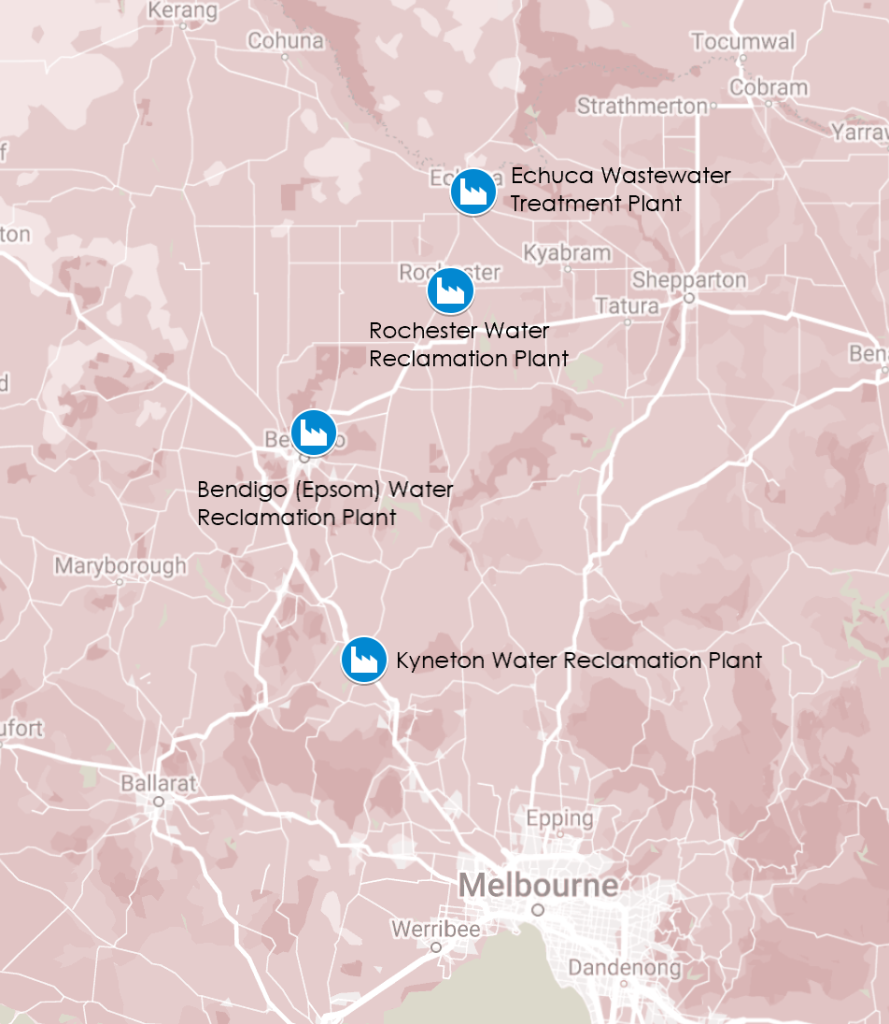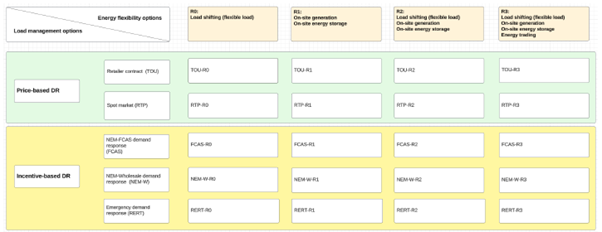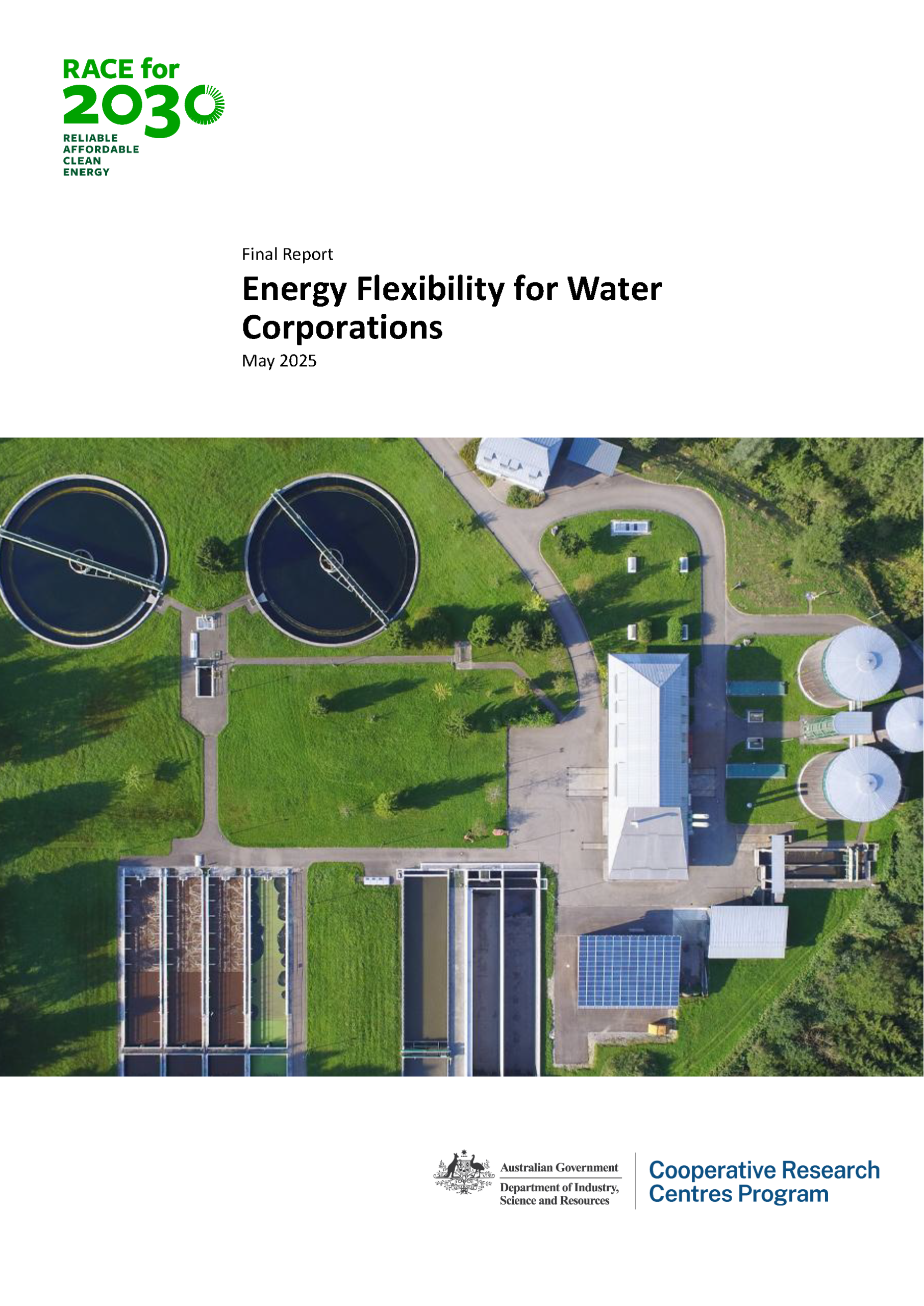Chief Investigators
Prof Rebecca Yang (RMIT)
Purpose of project
Water corporations in both New South Wales and Victoria have committed to a net-zero carbon emissions goal by 2050. This is largely due to the significant electricity consumption, which reaches an average of 1 MW (8,760 MWh pa) per corporation – resulting in costly energy bills and significant CO2-e emissions each year (more than 7,000 kt CO2-e). To meet this challenge head on, Sydney Water has been investing heavily in renewable energy systems that now cover 20% of its annual energy use while Coliban Water has committed to a 13% reduction in their carbon emission rates by 2025 with 4,300 tonnes of CO2-e saved annually.
This project was designed to support water corporations in achieving their net-zero targets by exploring the potential of load management and energy trading strategies. The study assessed the energy and cost efficiency benefits of fixed-time and adaptive load-shifting approaches, along with the integration of onsite renewable generation and storage solutions (including self-owned, third-party agreements, and community energy models).
The analysis focused on three primary load categories:
- Onsite loads at Coliban Water sites, as indicated in Figure 1,
- Neighbouring residential and commercial loads within the same electricity network area,
- Potential to incorporate local distributed energy resources (DERs) and battery storage systems.

Fig 1 Coliban Water Site Selection
A techno-economic analysis was conducted to ensure network operational constraints were preserved while simultaneously maximising DER hosting capacity, as outlined in Figure 2.

Figure 2: Techno-economic assessment matrix
Co-optimisation was performed across five load management strategies:
- Demand response for network support services,
- Emergency demand response such as load shedding.
- Load shimmying (frequency control ancillary services demand response),
- Load shifting, and
- Wholesale demand response.
The outputs identified and quantified revenue opportunities for Coliban Water and similar large regional commercial and industrial consumers while ensuring the network’s operational limits were maintained and DER hosting capacity was optimised. These value streams hold significant potential for financial savings and carbon reduction by leveraging renewable energy sources and optimal load management strategies. Additionally, these strategies may benefit surrounding customers by lowering network costs and creating new energy business models that engage local communities.
Findings of the project
The case study of Coliban Water evaluated the economic, technical and environmental feasibility of energy flexibility measures, revealing the following key insights:
- Load Shifting provides limited benefits: Aerator flexibility is constrained by operational requirements.
- Cost reductions are driven by Photovoltaics (PV) & Battery Energy Storage Systems (BESS): Large systems enhance self-consumption, lower energy costs, and improve energy security.
- FCAS & Wholesale Demand Resources (WDR) provide the largest cost savings: These services generate revenue while stabilising the grid.
- Spot Market Arbitrage Outperforms Retail Tariffs: Purchasing energy at low prices and selling at peak times maximises savings.
- Optimised Load Profiles can be achieved by using a combination of flexibility and trading: Aligning demand with market prices reduces grid constraints.
- Grid Impact Considerations: Demand side management (DSM) ensures stable power flows, while peer to peer (P2P) trading introduces variability, requiring advanced control measures.
- Smaller Water/Wastewater Utilities can achieve saving: Smaller sites, such as Coliban Water’s Rochester, Echuca, and Kyneton site, have limited wholesale access but can still achieve significant savings through PV self-consumption and FCAS aggregation.
Impact of project
This research project was designed to assist water corporations and high-demand users in decision making, helping them identify practical load management approaches – like fixed time or adaptive load shifting – that reduce electricity costs and improve energy efficiency. Additionally, it provided strategies for using renewable energy sources, such as energy trading through the National Electricity Market or peer-to-peer trading in VPPs, to provide support for a smoother energy transition with synergy between water industries and energy communities. The project assisted in creating a strategic roadmap for steadily transitioning towards renewable-powered operations, while effectively managing energy loads. Budgetary planning can now be optimised based on feasibility studies provided by this initiative, so that sustainability targets are met within required timelines.
This study assessed short-term impacts on distributed electricity network service providers, such as improving the understanding of opportunities and challenges posed by the adoption energy flexibility strategies, while long term effects can be seen through informed decision making leading to the implementation of revised flexibility strategies. Governments, other water authorities and industrial energy users will benefit from the refined research models which were developed as part of this project.
Knowledge sharing
- Disseminated key project insights at APSRC 2023 in the special workshop session of Solar Energy in the Water Industry.
Project partners – industry and research
RMIT (Lead), C4Net, Coliban Water, Monash University, Sydney Water
Industry Reference Group members
Ausgrid, DEECA (VIC), NSW DCCEEW, Origin Energy, South East Water, United Energy/Powercor
Webinar
Published Report
Status
- Completed
Project Leaders
- Rebecca Yang, RMIT
Linked PhD project
Completion Date
Q2 2025
Project Code
0411








